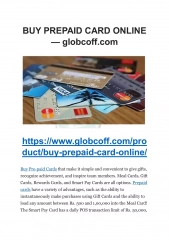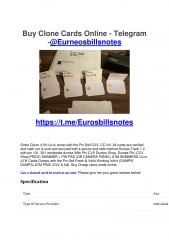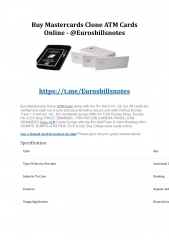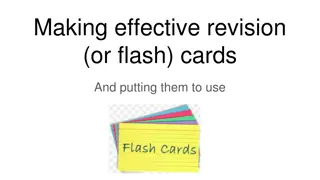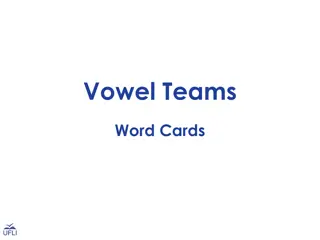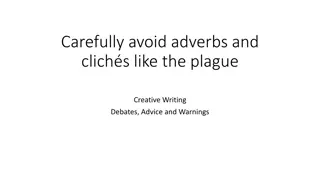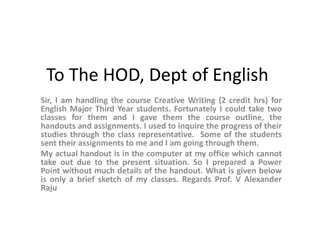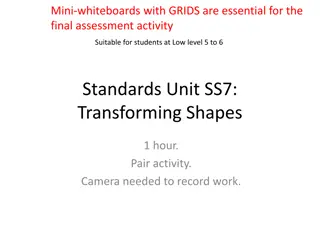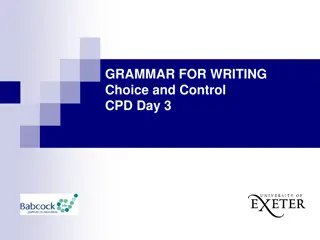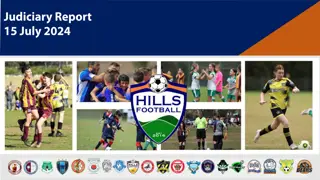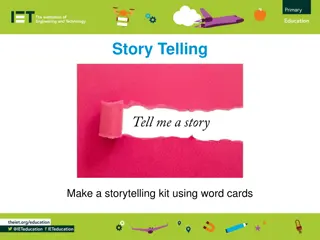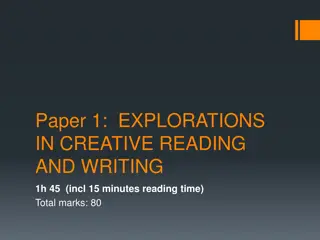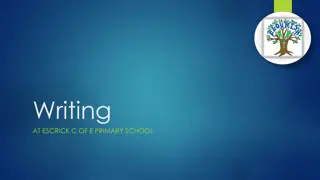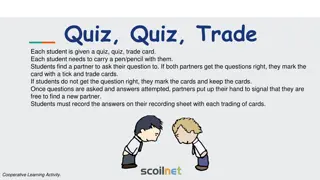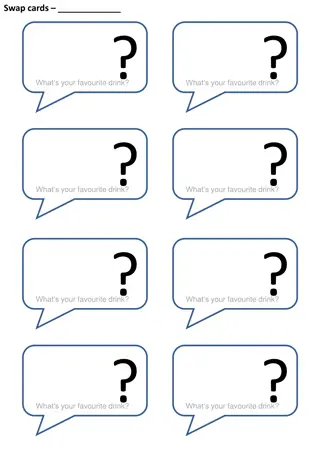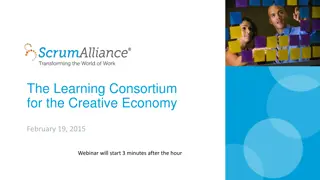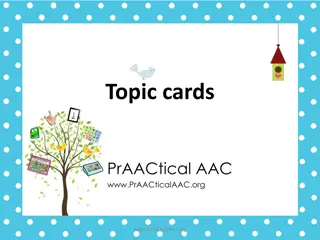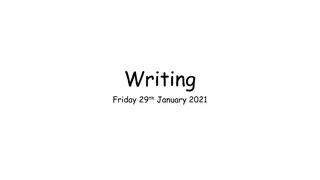
Creative Learning Activity Cards for Academic Writers
Explore Arts University Bournemouth's (AUB) Creative Learning Activity Cards, designed to enhance student writing skills and overcome challenges like writer's block. Discover tips for academic writing styles, such as sculptor versus painter writers, using the PEEL structure, and crafting references effectively.
Uploaded on | 2 Views
Download Presentation

Please find below an Image/Link to download the presentation.
The content on the website is provided AS IS for your information and personal use only. It may not be sold, licensed, or shared on other websites without obtaining consent from the author. If you encounter any issues during the download, it is possible that the publisher has removed the file from their server.
You are allowed to download the files provided on this website for personal or commercial use, subject to the condition that they are used lawfully. All files are the property of their respective owners.
The content on the website is provided AS IS for your information and personal use only. It may not be sold, licensed, or shared on other websites without obtaining consent from the author.
E N D
Presentation Transcript
Arts University Bournemouth (AUB) Creative Learning Activity Cards are an interactive teaching and learning resource for students of creative subjects at Foundation, BA or MA level. Cards can be used to support phases of student writing including planning, critical thinking, research and drafting. Tips for overcoming writer s block, tackling procrastination and building motivation can be found in the wild card section of the pack. Cards can be utilised as materials in facilitated seminars or workshops, as the basis for teaching in lectures or as an independent study resource for students.
AUBs Creative Learning Activity Cards were developed by Study Skills Tutors Julia Kotula and Alexandra Reynolds in collaboration with BA Graphic Design student Dominikus Kronwitter; with additional design support from Tobias Traves and valuable content contribution from Kizzy Beaumont. Cards are available in limited edition printed form at AUB, an editable PPT, and as a freely available PDF.
Sculptor writer or painter writer? Activity: Academic writers tend to fall into two key categories: sculptor and painter writers. Sculptor-writers free write a rough draft and then chip away at this to create a succinct academic essay. Painter-writers develop a precise plan using bullet points and then turn this into academic prose at the end of their process. Which of the two types of writer are you, or are you a mixture? If you struggle with academic writing, try experimenting with the other approach. Usefulness: This helps us work effectively and enjoy the process of crafting a text.
Use the PEEL structure Activity: Look at the paragraphs in one of your essay sections. Does your writing follow the PEEL structure? PEEL stands for Point, Evidence, Explanation, Link. This structure helps us to create clearly written paragraphs within essays. To create a PEEL paragraph, begin with your overall point, then add evidence from your research and your own explanation, before linking to the next paragraph. Usefulness: The PEEL structure helps ensure paragraphs have a shape and that your argument is clearly cited in an essay.
Craft references into your text Activity: References should be crafted into the argument of your essay. Try varying between the different approaches to quotations used below: Emphasise information: Violent films have a negative effect on children s behaviour (Carlton, 1999, p.23). Emphasise research: It has been suggested that violent films have a negative effect on children s behaviour (Carlton, 1999, p.23). Emphasise author: Carlton (1999, p.23) suggests that violent films have a negative effect on children s behaviour . Usefulness: This will help you to write clearly and demonstrate awareness of referencing conventions.
Dos and donts of academic style Activity: Replace any informal or vague phrases with semi-formal and precise equivalents. Avoid: Informaland imprecise language: I went for this design because , some people think... , Rhetorical questions: Why did I approach this topic? Contractions: it s , can t , won t Instead use: Formal and specific language: This design was chosen as , theorists such as x and y state that... Affirmative statements: I approached this topic because Full forms of words: it is , cannot , will not . Usefulness: Using a formal style of writing will help you maintain academic conventions.
Decide when to quote or paraphrase Activity: Review the use of sources in your essay. Quotation: an idea copied exactly from the text which expresses your point in a powerful way. E.g. As argued by Berger (1972, p.47), men act and women appear . Paraphrase: an idea from the text rephrased in your own words, used where no one part of the text expresses your point exactly. E.g. Berger (1972, p.47) argues imagery is commonly produced for an active male viewer, incorporating a passive female subject. Usefulness: This will help back up your argument as carefully as possible.
Reflective writing Activity: Reflective writing involves thinking about what you have learnt in a form of a cycle. What? What happened? What were your aims and purpose? How did you feel about the task? So what? What was positive and negative about the experience? Why? What did you learn about your subject / teamwork? Why was it significant? Now what? What could you do differently next time? What do you need to improve? Usefulness: Writing initial ideas for these questions will help you evaluate and reflect on your learning.
Structure and plan your essay Activity: Every section of your essay serves a purpose. Try structuring your essay as below: Introduction: (10% of word count). Bird s eye view of the essay. Include topic, focus, argument, list of sections and conclusions Main body: (80% of word count) Section one: History and context of your topic in relation to your argument Sections two & three: In-depth investigation of case studies related to your argument Conclusion: (10% of word count). Restate your argument, summarise points, answer the question, point to any future research Usefulness: This helps build a purposeful structure for your essay, leading your reader clearly through your argument.
Final essay checklist Activity: Just before you hand your essay in, consider answering the questions below. Am I using formal language wherever possible? Do I understand all the terms I have used? Have I checked all references in relation to the AUB guide? Does every word need to be there? Does every point follow on to the next? Have I carried out a spelling and grammar check? Usefulness: This exercise helps ensure you are writing according to best practice in academic conventions.
Create flow within a paragraph Activity: To ensure the ideas in your paragraph are connected, carefully review your draft. 1. 2. Remember: ONE paragraph = ONE point. Introduce your point in a topic sentence and make sure all supporting sentences explain or back up this idea. Clearly signal the relationship between ideas. (use in addition, in contrast, due to, as a result). Connect ideas by making sure every sentence leads onto the next in a logical way. (to make this connection this or it can be used when referring to a previous idea). 3. 4. Usefulness: This will help you achieve a smooth flow of ideas you want to discuss.
Develop an argument within your essay Activity: Try some of these techniques to ensure that the ideas in your essay flow and are connected. Every paragraph should refer to your argument. Refer to your overall argument in your topic or concluding sentences. Use topic and concluding sentences to create a link between paragraphs. Clearly signal the relationship between paragraphs: addition, contrast, cause, effect. Usefulness: This will help you ensure clarity and continuity of your argument throughout your essay.

